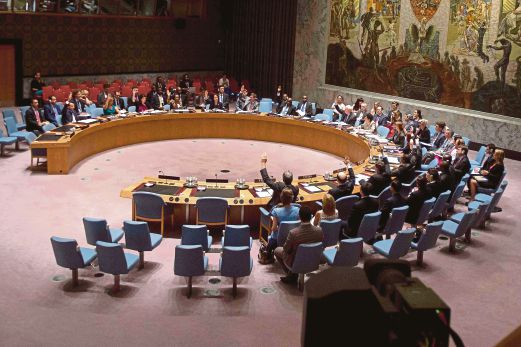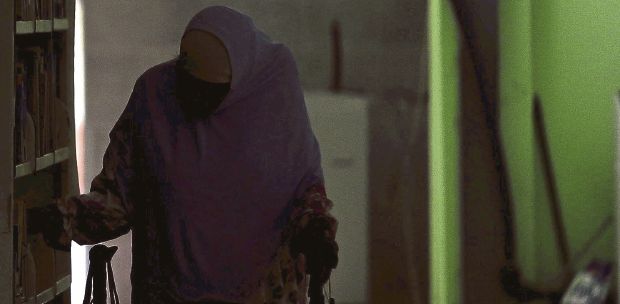EVERY year, since 2009, the United Nations General Assembly has held a debate on the principle of the Responsibility to Protect, or the “R2P” as it is concisely but not affectionately referred to.
This year’s UN debate on the R2P is scheduled for Sept 8, and is one of the last items on the UN agenda for the 68th (current) session.
Many would argue that the responsibility to protect is a re-packaging of humanitarian intervention, making what was once objectionable more palatable for sovereign states. But the R2P is much more than a rebranding of an old concept.
True, it defines the exact instances when the international community has a responsibility to “rescue” victims of mass atrocities: when a state has failed to protect its citizens, or when a regional organisation has failed to galvanise into action.
But much more than that, the R2P places the individual at the heart of the international community’s concerns. It shifts the focus of international relations away from the state, and onto the citizen.
Unlike humanitarian intervention which could have been invoked even for gross human rights abuses, the R2P can only be used in four specific cases: genocide, war crimes, crimes against humanity, and ethnic cleansing.
This “limiting” of the scope of the R2P was meant to circumvent the objection of the 114-member states of the Non-Aligned Movement (NAM), for in 1999, it was NAM that delivered the death knell to “humanitarian intervention”, arguing that it would be open to abuse by the stronger states.
Many believe that the R2P was introduced as a reaction to the events of Sept 11, 2001. Nothing can be further from the truth.
The concept was a response to Kofi Annan’s 1999 speech in which he challenged the world to come up with an international norm that would “protect civilians from wholesale slaughter”.
Even before 1999, the world was changing. Muted were the pluralists (those who believed that intervention could only be accepted as a strict exception).
Instead, the voices of the solidarists (those who believed that intervention in the name of common humanity and the wellbeing of the population should be the norm of international relations) were heard loud and clear.
Into this changed world, the concept of the Responsibility to Protect was born. Canada created the International Commission on Intervention and the Sovereignty of the State (ICISS) and appointed former Australian foreign minister Gareth Evans and Algerian diplomat Mohamed Shahnoun, as co-chairs of the Commission.
The ICISS Report, released in
December 2001, further pushed forward the notion of state sovereignty as less of a right, and more of responsibility — the responsibility of the state to protect its own citizens and of the international community of states to protect the citizens of the world.
States could no longer hide behind the cloak of sovereignty to hide their bloody hands. Sovereignty of the state — never absolute, nor obsolete — had radically evolved.
As a concept, the R2P idea was endorsed by world leaders at the 2005 UN World Summit meeting in New York after month upon month of haggling. But in clever UN-speak, the implementation of the R2P was never agreed to since paragraph 139 of the World Summit Outcome Document oh-so-cleverly sent the idea back for “the General Assembly to continue consideration” of it.
For four years, the R2P remained on the backburner of the UN
agenda until one fine day in 2009, when Secretary-General
Ban Ki-Moon manoeuvred to
have the General Assembly face its R2P demon.
General Assembly president Miguel d’Escoto Brockmann of Nicaragua countered the move with his own Concept Note on the R2P — a note which was less than enthusiastic on the R2P implementation.
It was a time when delegates watched as a kind of mirthless comedy unfolded — the power play between the president of the General Assembly and the secretary- general as both sought to influence clueless delegations on the R2P.
After much debate and soul-searching, the UN member states agreed that the only way forward on the R2P was to keep on talking about it. So, 2009 became the only year in which a resolution on the R2P was adopted. The four-paragraph resolution said little except that the R2P would continue to remain on the agenda. Last year’s R2P informal interactive should have, by all accounts, proved to be interesting.
First, there was a new UN adviser on the R2P in town — Edward Luck’s luck on the R2P proved
elusive and so the secretary-general has brought in intervention Oxford professor Jennifer Welsh as his successor.
Second, the United States delegation had as its new Permanent Representative, none other than Samantha Power, formerly of the National Security Council and one of the President’s trusted advisers. More important, Power is the Pulitzer Prize winner for her book, A Problem From Hell, on America’s role in the prevention of genocide and human suffering.
Third, in the president of the General Assembly’s seat was former Serbian foreign minister Vuc Jeremic, whose country will not soon forget the North Atlantic Treaty Organisation’s interventionist strikes of 1999.
Unfortunately, the R2P debate last year was more of the same, with many countries merely restating their position, and most not bothering to say anything at all.
This year, instead of personalities, the R2P looks set to be interesting because of all the hot spots in the world — Syria, Iraq, the Central African Republic, Nigeria — places in which intervention may still occur.
But whether the R2P will finally get its “boots on the ground” this time, or remain a debate in perpetuity remains to be seen.





